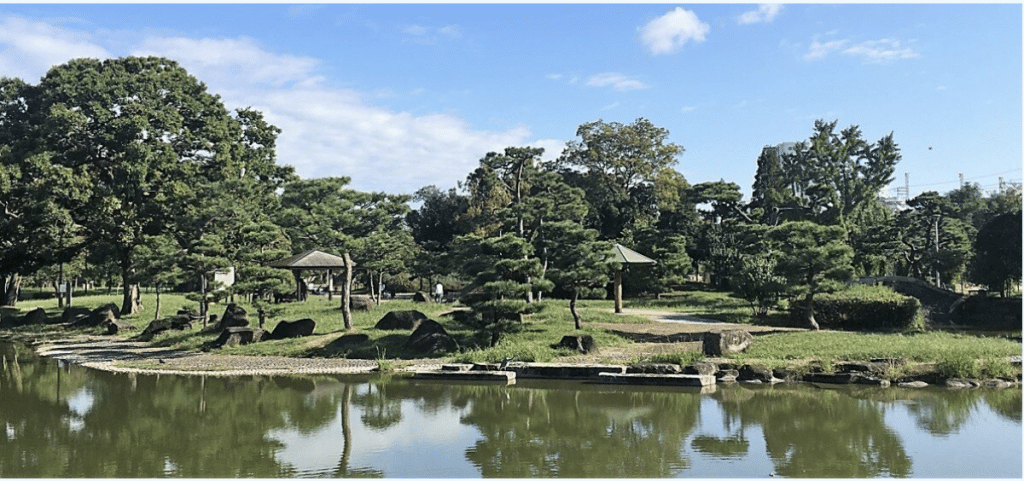Table of Contents
Introduction
Welcome to the first installment in a four-part series on Sumiyoshi Ward in Osaka. Part one (co-written by Sayaka Takami) covers Tezukayama Kofun, Sumiyoshi Taisha and the area around Sumiyoshi Taisha Station. Part two covers the Hankai Line and the third installment is an exploration of local tramway stops on the Uemachi Line. Part four is about temples, shrines, restaurants and other points of interest around stations on the Nankai, JR and Osaka Metro lines.
Sumiyoshi Ward in Osaka, Japan, is steeped in a rich history that dates back centuries. Its name, “Sumiyoshi,” translates to “residing in the sanctuary of the gods,” reflecting its deep cultural and religious significance.
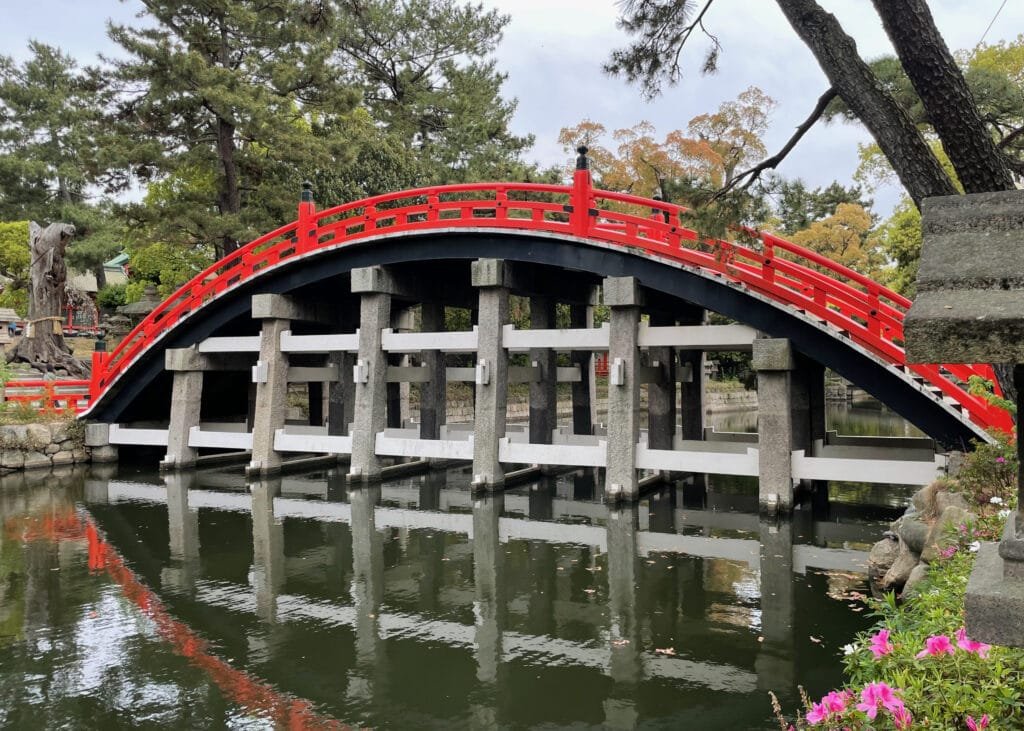
Sumiyoshi’s strategic location, historical significance, and vibrant culture make it a vital part of Osaka’s identity, attracting visitors and residents alike who are drawn to its charm and storied past.
The area is most renowned for the Sumiyoshi Taisha, one of Japan’s oldest and most revered Shinto shrines. Founded in the 3rd century, it predates the establishment of Osaka itself. Dedicated to the Sumiyoshi Sanjin, three Shinto gods associated with sea travel, Sumiyoshi Taisha has been a center of worship for sailors, fishermen, and travelers for over a millennium. The shrine’s unique architectural style, characterized by its distinctive curved roofs, has influenced the design of many other Shinto shrines across Japan.
During the Edo period (1603-1868), Sumiyoshi became an essential stop along the Tokaido, the major road connecting Kyoto and Edo (present-day Tokyo). This brought increased economic activity to the area, as well as cultural exchange and the development of local industries.
In the late 19th and early 20th centuries, Sumiyoshi experienced rapid modernization and urbanization with the growth of Osaka as an industrial and commercial hub. The ward became a bustling residential and commercial district, attracting people from all walks of life.
However, Sumiyoshi, like much of Osaka, suffered extensive damage during World War II due to bombings. Despite this devastation, the ward quickly recovered during the post-war reconstruction period and emerged as a vibrant and resilient community.
Today, Sumiyoshi Ward is a blend of old and new, with traditional temples and shrines coexisting alongside modern residential and commercial developments. It retains its cultural heritage through annual festivals, such as the Sumiyoshi Matsuri, which attracts thousands of visitors each year.
Tezukayama Kofun
By Sakaya Takami
Address: 2-8 Tezukayama-nishi, Sumiyoshi-ku, Osaka
Getting There: About 10 mins walk from Exit 3 at Tamade Station on Osaka Metro Yotsubashi Line.
Tezukayama Kofun is a huge burial mound which extends 120 meters long. It was constructed between the end of the fourth century and fifth century by a regional ruling clan.
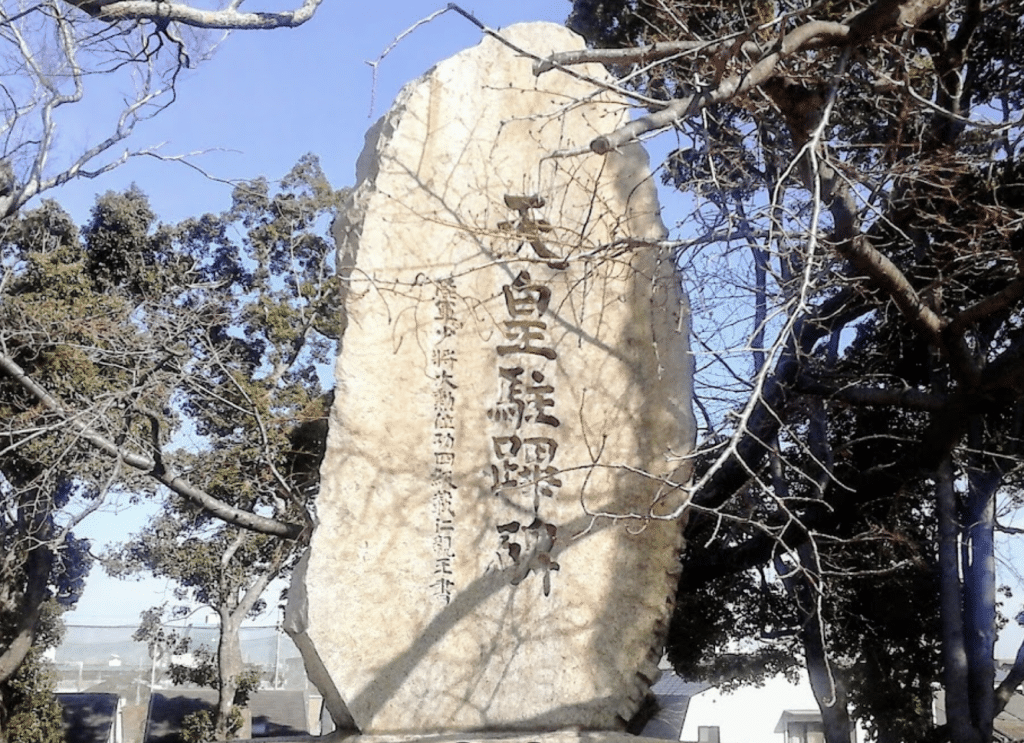
In Japanese history, the third to six century called “Kofun Era” (some historians insist that the Kofun era ended in the seventh century). In those years, more than 160,000 Kofun were built originally in the Kansai area, but later throughout Japan.
The largest Kofun is Daisenryo Kofun in Sakai City, UNESCO world’s heritage, which is commonly accepted as a tomb for the late Emperor Nintoku.
Sumiyoshi’s Tezukayama Kofun extends 120 meter long, not as large as Daisenryo Kofun, but obviously you can see its entire picture only from the sky.
As you may notice, Tezukayama Kofun and Daisenryo Kofun are similar keyhole shape called zenpō-kōen-fun (前方後円墳), having one square end and one circular end.
Despite of its densely populated location, Tezukayama Kofun has well-kept its original key-hole shape, the best restored zenpō-kōen-fun in Osaka city.
Zenpo-kōen-fun is the most common shape, mainly highest ranking rulers were buried there. Other shapes of Kofun include circular-type (empun (円墳)), “two conjoined rectangles” type (zenpō-kōhō-fun (前方後方墳)), and square-type (hōfun (方墳)).
Sumiyoshi Taisha
By Sakaya Takami
Address: 2 Chome-9-89 Sumiyoshi, Sumiyoshi Ward, Osaka, 558-0045. Open: 6:30-17:00
Getting There: Sumiyoshitaisha Station (住吉大社駅) is a train station on the Nankai Main Line in Nagaochō, Sumiyoshi-ku, Osaka, Osaka Prefecture, Japan, operated by the private railway operator Nankai Electric Railway.
Sumiyoshi Taisha, located in Sumiyoshi Ward, Osaka, is one of Japan’s oldest and most revered Shinto shrines. When visiting, start your journey by passing through the distinctive vermillion-colored torii gates, symbolizing the transition from the mundane to the sacred.
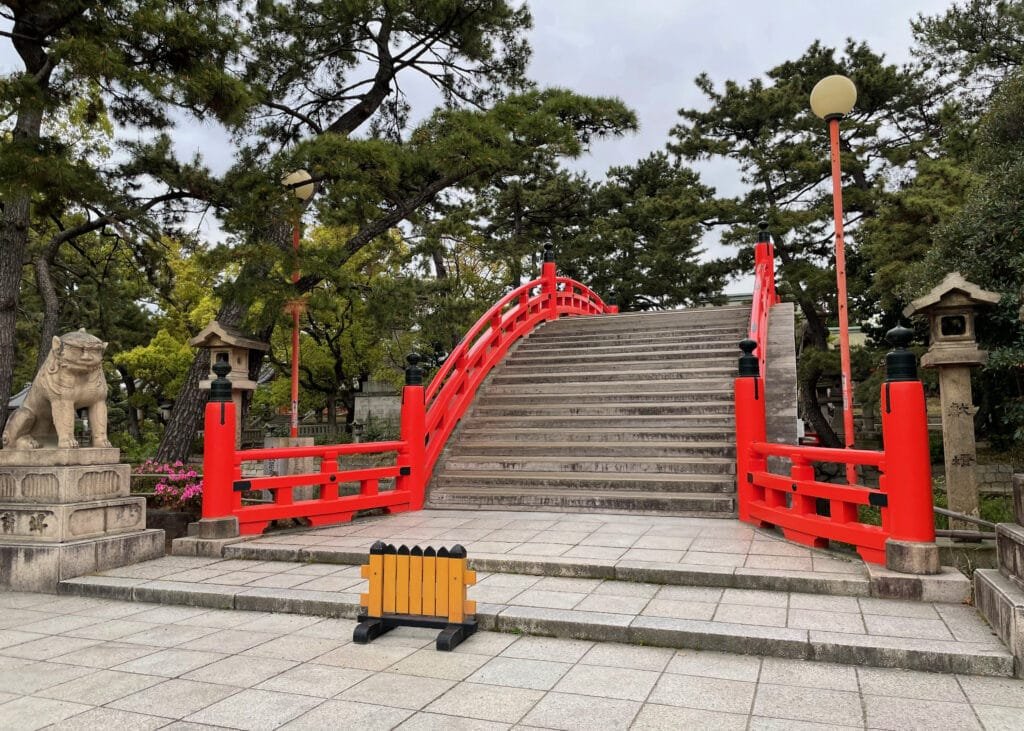
Explore the shrine’s unique architecture, characterized by its curved roofs, which are said to resemble the undulating waves of the sea. Marvel at the intricately designed main hall, where you can offer prayers and purchase omamori (amulets) for blessings and protection.
Don’t miss the opportunity to stroll across the Taiko-bashi Bridge, which spans the shrine’s pond and is believed to cleanse visitors of impurities before approaching the gods. Take in the serene atmosphere of the surrounding gardens and ponds, perfect for quiet reflection and relaxation.
Taiko-bashi Bridge
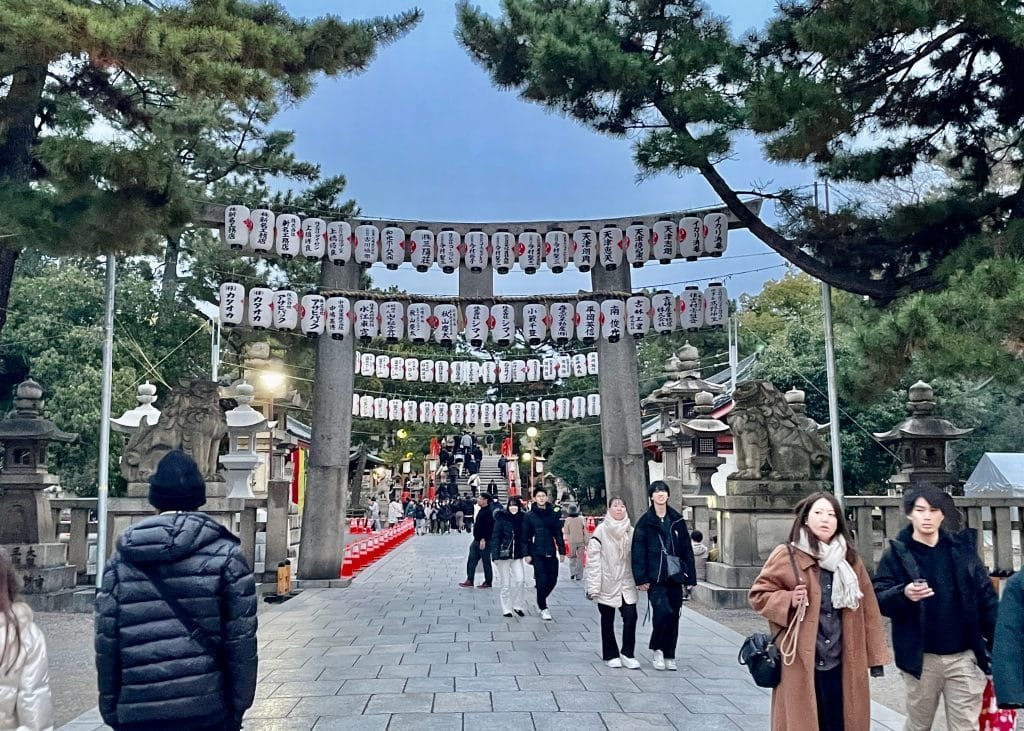
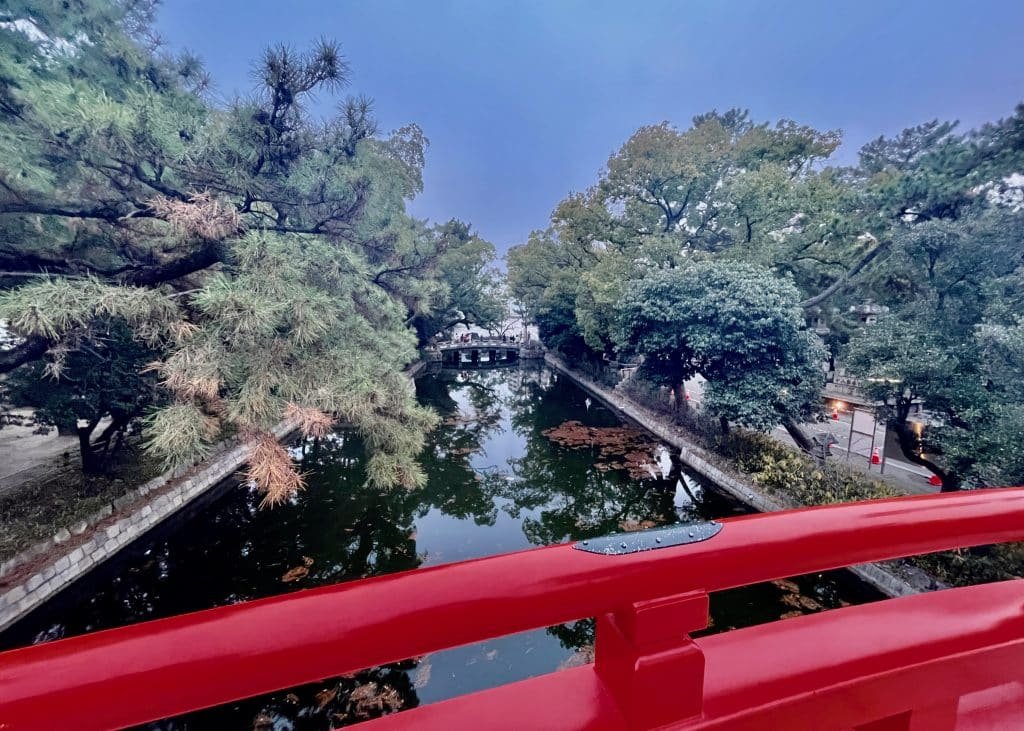
Immerse yourself in the vibrant culture of Sumiyoshi Taisha by timing your visit with one of its lively festivals, such as the annual Sumiyoshi Matsuri, featuring colorful processions, traditional performances, and delicious street food.
Whether you’re a history enthusiast, a spiritual seeker, or simply looking to experience authentic Japanese culture, a visit to Sumiyoshi Taisha promises an unforgettable journey into the heart of Japan’s ancient traditions.
There are more than 2,300 Sumiyoshi shrines throughout Japan and Sumiyoshi Taisha in Sumiyoshi Ward is the head of those shrines. This prestigious shrine has 1800-year-long history
The four shrines consist of Honden at Sumiyoshi Taisha, all take the Shinto shrine architectural style called Sumiyoshi Zukuri (=Sumiyoshi Construction). The Honden was designated as Japanese National Treasures in 1953.
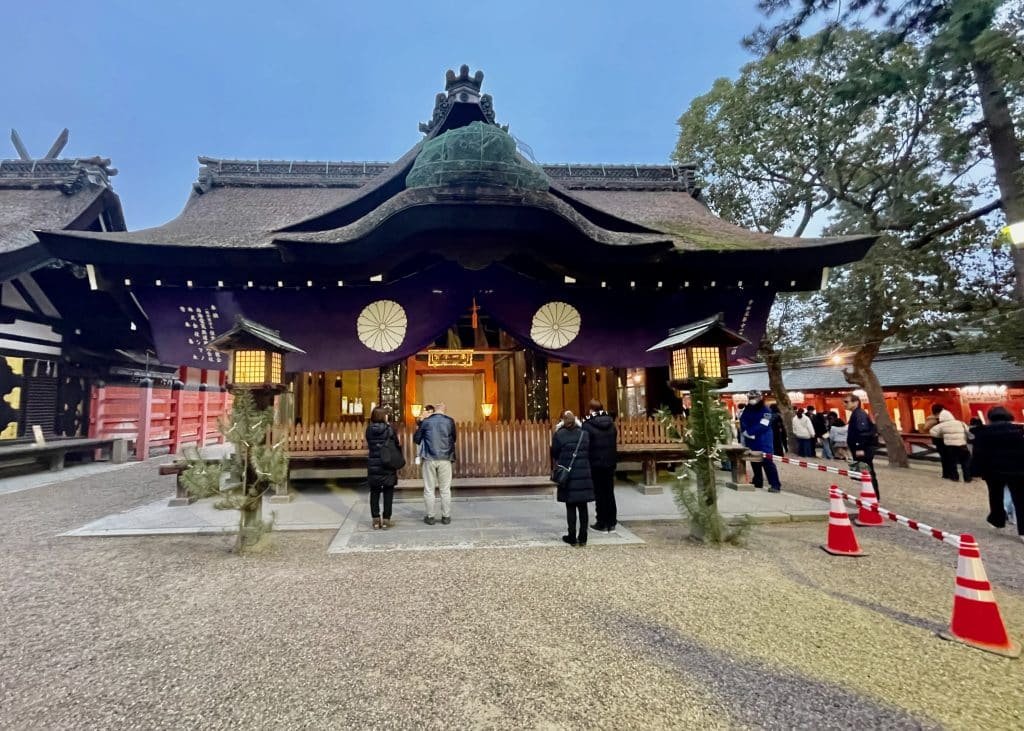
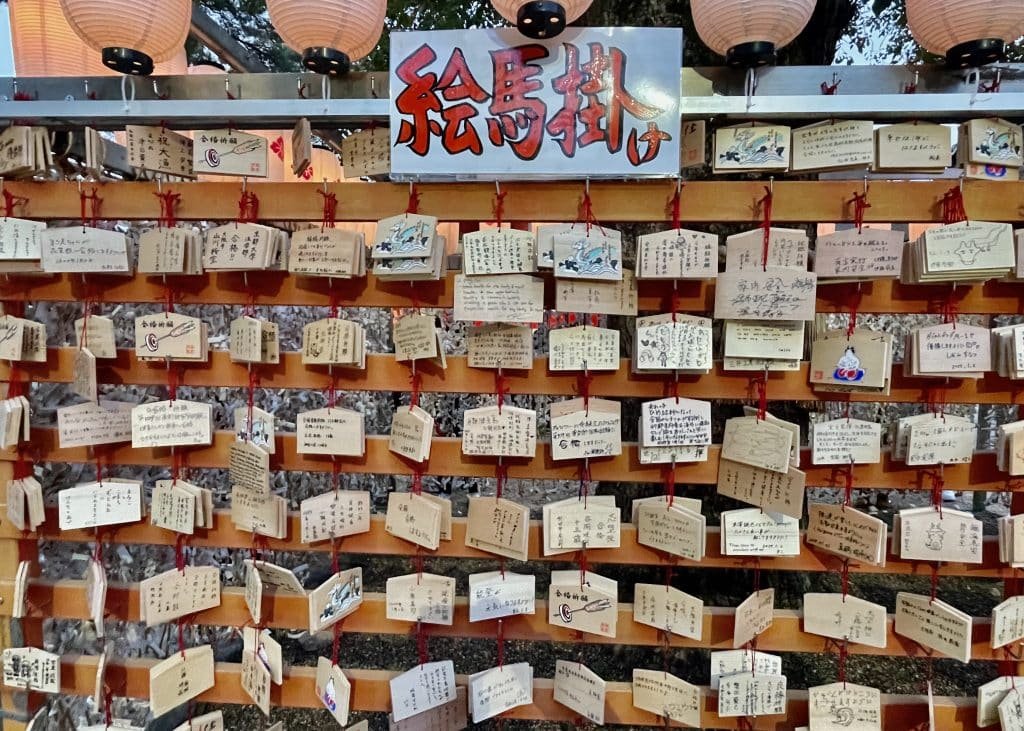
As Sumiyoshi Taisha was constructed before introduction of Buddhism in Japan, the style was not affected by Buddhist culture transferring Japan’s indigenous architectural style.
Japanese shrines have kept ancient tradition of Shikinen sengū, where the shrines and affiliated buildings have been regularly decomposed and then faithfully rebuilt to restore original design.
In Sumiyoshi Taisha, the interval of Shikine sengu is 20 years. The old records confirmed the shrines strictly kept this ritual interval no matter what happened to them. Its last Shikinen sengu was in 2011, so the current shrines are 13 years old this year.
Kitamaebune and Ishidoro Stone Lanterns
In Sumiyoshi Taisha, you can find more than 600 remarkable stone lanterns in different sizes and shapes. They were dedicated by variety of merchant associations, such as fishery association, shipping companies association and wholesale dealers organization. They competitively engraved their name on the stone to stand out.

The above pair of lanterns were donated in 1812 by fishery wholesalers dealing with raw fish. The name of contributors are visible on the side of the base stones. The letters on the main front was written by a famous scholar, Ransyu Goi.

These are the tallest lanterns among all the lanterns in Sumiyoshi Taisha made by dried sardine merchants. In those days, dried sardine were in great demand as fertilizer for rice or vegetable fields all over Japan.
But why did these shipping/trading companies dedicated these lanterns to Sumiyoshi Taisha?
I’ll give you a hint: “Bon voyage”.

Copyright: Iida Yonezō (1887∼1968) (photographer), Public domain, via Wikimedia Commons
In Edo era, Osaka port was the starting/ending point of measure commercial routes connecting Hokkaido, Tohoku and Hokuriku. Great numbers of trading ships called Kitamaebune were fully loaded with rice, fish or other trading goods from all over Japan.
As Sumiyoshi Taisha was long worshipped as God of Sea, ship owners came to the shrine praying for their safe and successful sailing.
Unfortunately, as marine transportation made these industries, most of these organizations dissolved or disappeared over time. So most of the lanterns lost their owners and are left unmaintained.
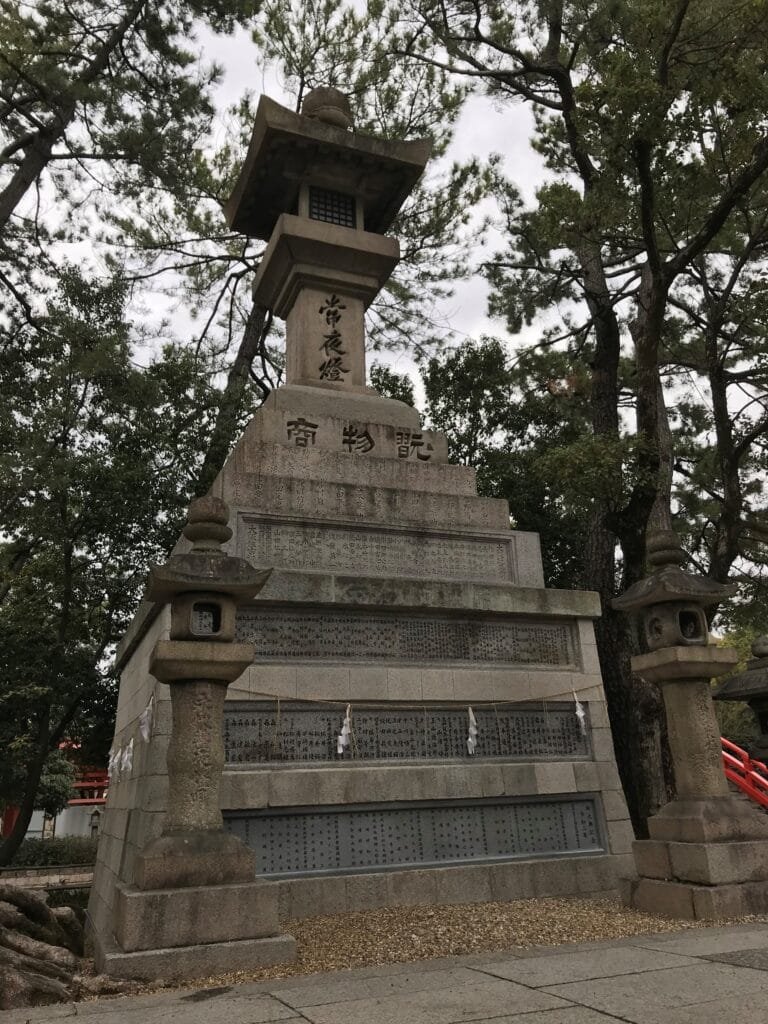
Remarkably, the toy wholesaler association has kept maintaining their historical monument. The association originally built it in 1762 and repeatedly repaired it five times to avoid falling off. Each repair, they added base stones noting names of the members to reward their contributions for the restoration.
Current business environment is not optimistic for these traditional toy merchants, as most of them are local family-run business. But despite of increased difficulties, they made the latest repair last year hoping to transfer valuable practice and inspire future generation. The newest plate on the bottom stone proudly showed the name of dedicated contributors. Chitose Okonomiyaki
Exploring the area around Sumiyoshi Taisha Station
By Matt Kaufman
When I took over this article from the very talented Sayaka Takami, I knew I would have to enlist the help of a local expert. I contacted Eiji Harmada, a rock fan who owns a bar in nearby Abeno Ward called Igi Nashi, which is named after an album by legendary folk singer Mikami Kan. Harmada was also in an insane noise band called Daimyo Gyoretsu that almost burned down a club called Bayside Jenny in 1996.
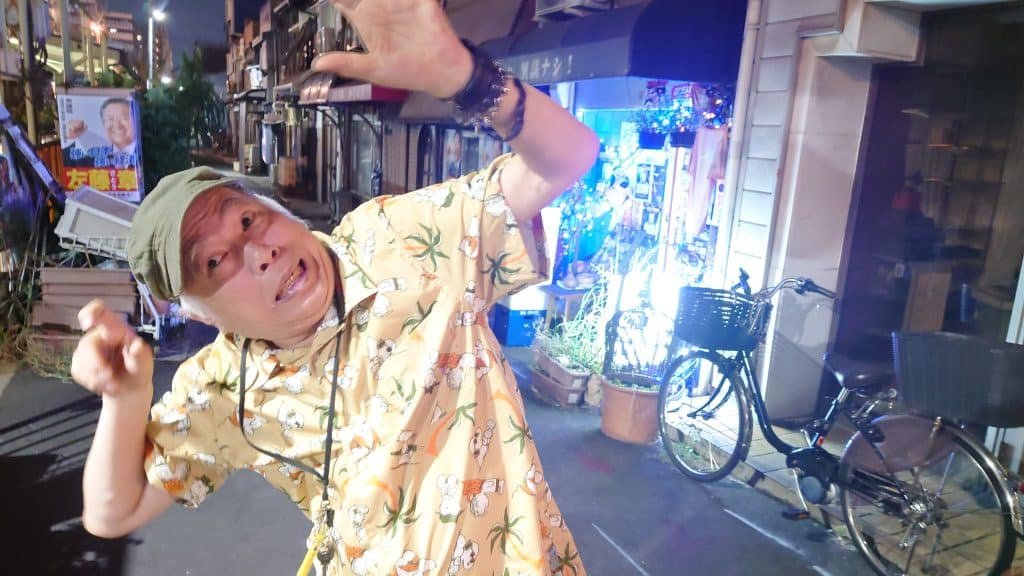
I soon discovered that even locals have trouble distinguishing the boundaries of Sumiyoshi Ward. For example, Nagai Station is in Sumiyoshi-ku but Nagai Park, which is across the street is actually in Higashi-Sumiyoshi Ward. One would assume that Sumiyoshi Park is located in Sumiyoshi Ward. Wrong! It is located in Suminoe Ward. This happened over and over again. Harmada and other locals would suggest an awesome bar or restaurant only to discover at the last minute that is was located in another ward.
There is a reason for the confusion, but the answer can be found in the history of the ward: “Sumiyoshi-ku was formed in 1925 with the second expansion of Osaka city into an area that was formerly part of the original Sumiyoshi-gun. In 1943, two sections were separated from Sumiyoshi-ku to form Abeno-ku and Higashisumiyoshi-ku. Also, in 1943, part of Nishinari-ku and all of Kohamachi-ku were absorbed into Sumiyoshi-ku. In 1974 Sumiyoshi-ku was further subdivided, resulting in Sumiyoshi Park, Anryuu, and Hamaguchi becoming part of the newly formed Suminoe-ku.”
Kousuke 幸すけ Standing Bar
Address: 3-14 Nagaochō, Sumiyoshi Ward, Osaka, 558-0044. Tel: N/A. Open: 15:00-22:00
After exploring Sumiyoshi Taisha, Eiji Hamada took me to one of his favorite bars, Kousuke, which is located under the tracks of Sumiyoshi Taisha Station. Sumiyoshi Taisha often gets crowded but this place was empty at the time.
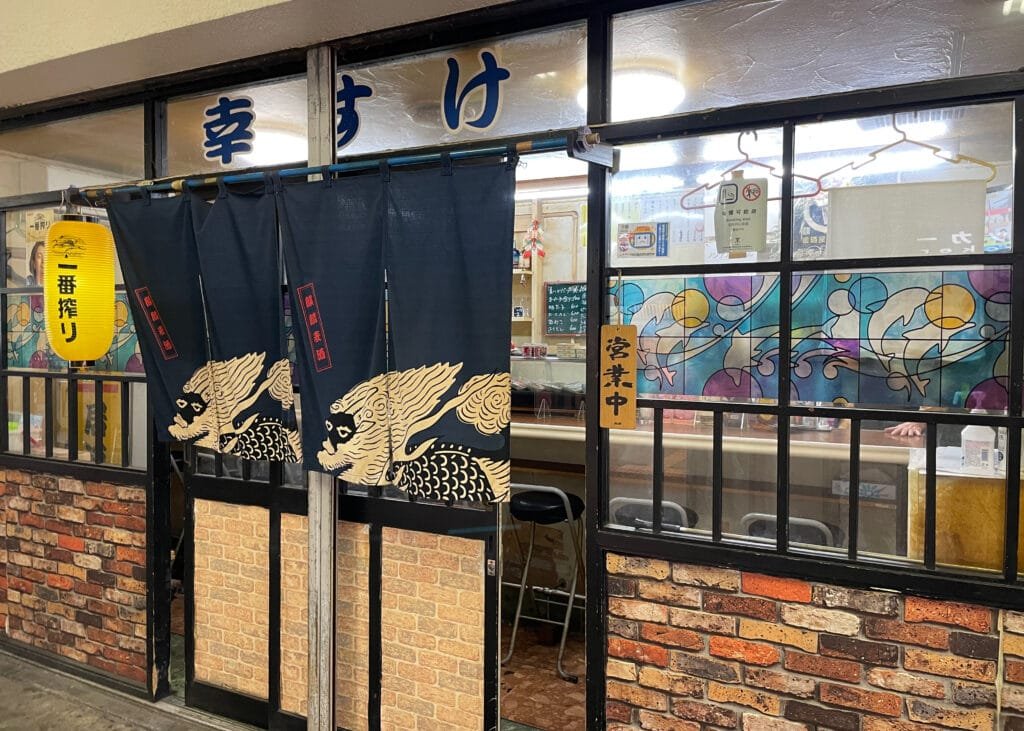
We were joined by Eiji’s good friend, Morrie, the singer of Osaka Urban Boys, a local blues band. Morrie has an uncanny resemblance to Mick Jagger is currently performing as a solo artist while the band is on hiatus. We ordered cold beers and a few dishes. Kousuke specializes in simple izakaya fare that can be served quickly and the prices are very reasonable.
Morrie told me an interesting story about the time the keyboard player in Osaka Urban Boys fulfilled a lifelong dream of visiting New Orleans during his honeymoon. He attended a blues club and when he told the owner that he came all the way from Japan he was invited to perform with a local band. The musicians were so impressed that they invited him to attend a recording session, but he had to fly back to Japan the next day. I hope to visit The Big Easy someday. Stories like this make my day.
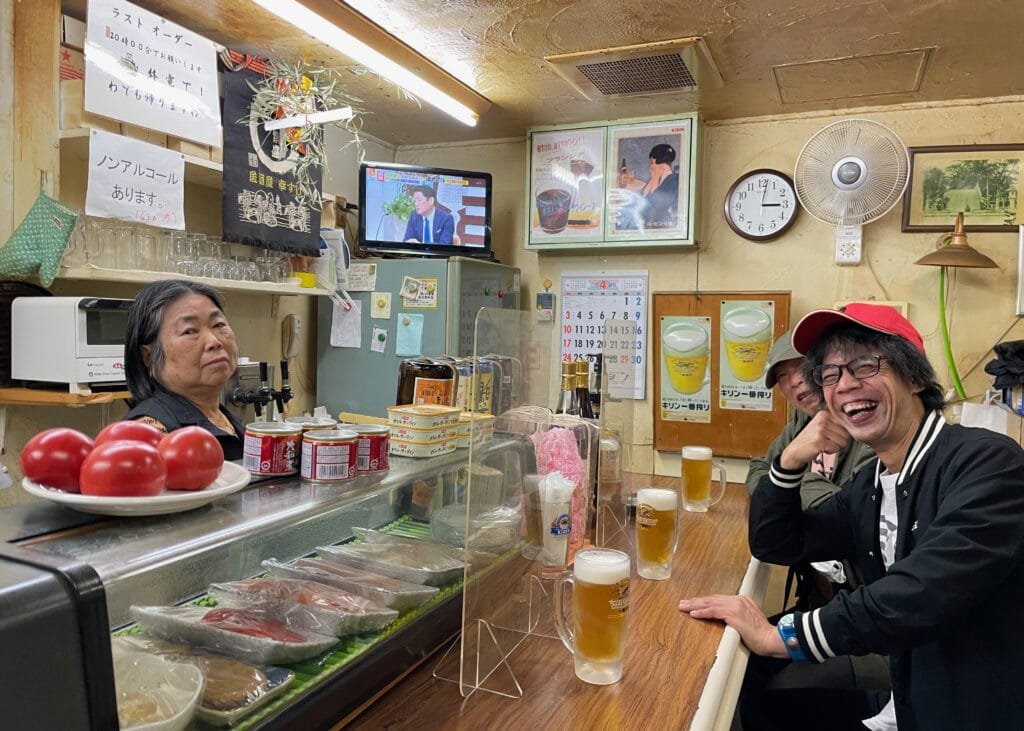
I was hoping for a longer tour of Sumiyoshi Ward, but Eiji suddenly remembered that he had to walk his dog. Morrie realized he had come all the way to Osaka with only 1,000 yen in his pocket and had to go back. Maybe this was a polite way of ditching the inquisitive foreign reporter, but I’d like to take them at their word. As Eiji walked off into the distance I felt like recreating the last scene of the movie Shane: “Eiji, come back!” (Just kidding, Eiji!) He had already spent many hours showing me the ropes. It was time to go off on my own.
Izumoya Eel Restaurant 鰻まむし いづもや Est. 1950
Address: 3 Chome-29-1 Higashikohama, Sumiyoshi Ward, Osaka, 558-0051. Tel: 06-6671-2768. Open: 11:30-17:00. Closed; Wed
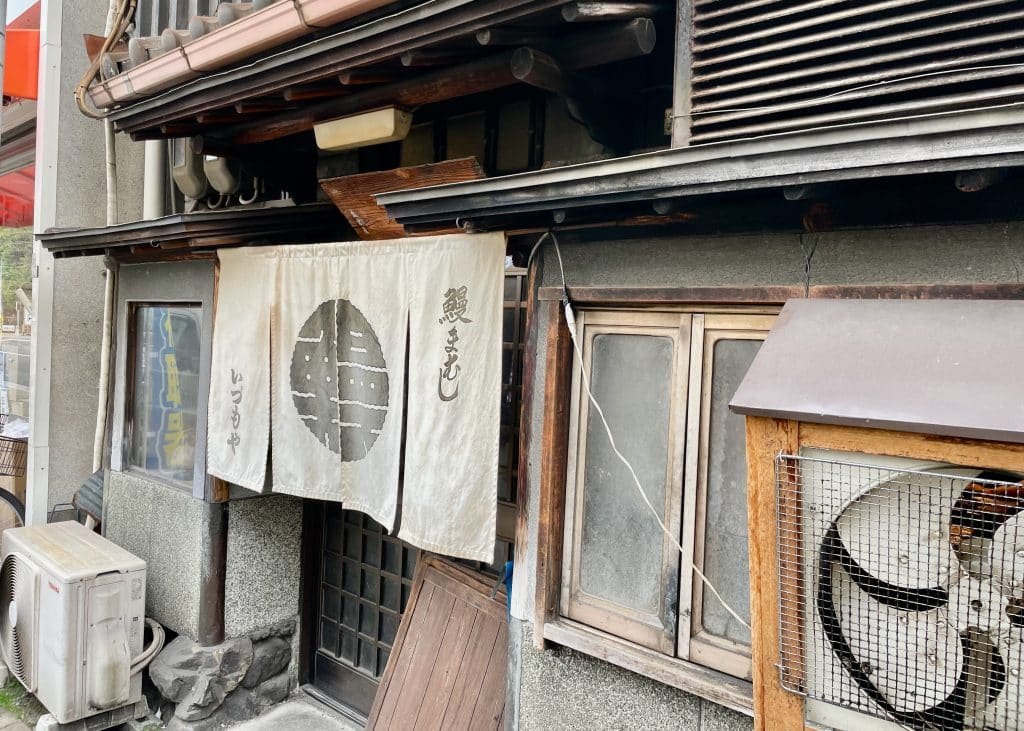
Eiji mentioned that Sumiyoshi Ward is famous for a dish called “unagi mamushi,” a grilled eel dish on rice that is commonly known as “unagi kabayaki” outside of Kansai. There are various theories about the origin of the term “mamushi” (way too complicated to explain here), but there is a fundamental difference in the preparation of this eel dish in the Kansai region. In Kanto the eel is slit down its back, then grilled and steamed before being flavored with traditional sweet sauce and grilled a second time. In Kansai the eel is slit down the belly and grilled without being steamed. The eel is then placed between layers of cooked rice so the outer skin can be tenderized by the hot steam.
In Sumiyoshi Ward the two most famous eel restaurants near Sumiyoshi Taisha are Izumoya and Kawakatsu. The latter serves Kanto-style eel and the menu does not include “mamushi,” so my wife and I decided to go to the former. Izumoya opens at 11:30 AM and closes when they sell out (usually at around 4PM). My wife and I arrived at 2:00 and went to the back of the line. One of the staff came out and gave us a ticket. We got there in the nick of time. The next couple to arrive were told that they couldn’t accept any more customers for the day.

We were let inside about a half hour later and it was definitely worth the wait. You often hear stories about walking into an old shop feels like a “time slip” to another era. The term is probably overused when writing about nostalgic shops in Japan, but there was no denying that the feeling that this is what Japan must have been like in the 1950s. The interior is filled with four old tables with rickity chairs and a counter that only sits four people. The walls are beautifully aged with five decades of grilling eel on charcoal, but you don’t have to worry about your clothes smelling of smoke because the shop has a powerful air filter, one of the few modern amenities. They even use an ancient black rotary phone to take orders!
We could not remember the last time we had eel. When we first got married it seemed like we ate it at least once a month, but then prices skyrocketed to the point in which it became too expensive to buy on a regular basis. The prices are simple for Unagi Mamushi at Izumoya. Choose from 600, 800, 1,000 1,500 or 2,000 yen sets. Having waited in line for 30 minutes we decided to splurge on the most expensive option, which gets you the most eel, naturally.
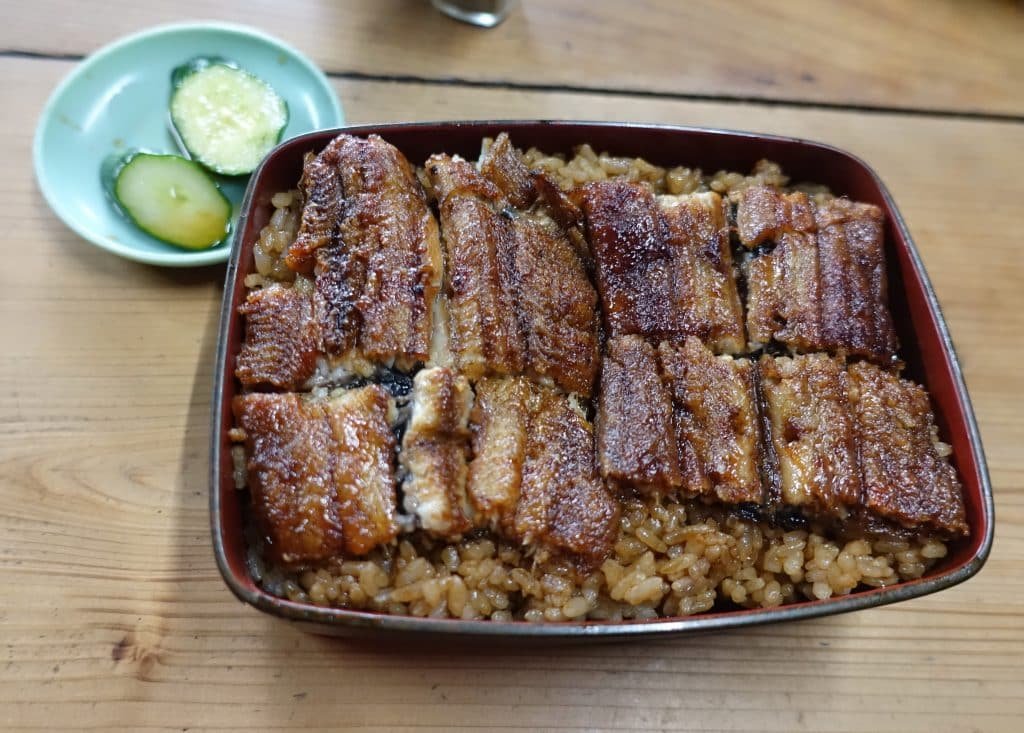
The unagi musashi was served in an old fashioned bento box and came with a side dish of pickled cucumbers, which were very tasty . I’m glad we decided not to share because this was without exception the best grilled eel I have ever had in my life. It was juicy and tender and the sauce was perfect. These days you hear of places in tourist taking advantage of tourists by overcharging for simple dishes due to the weak yen, but it is amazing that you can still eat this dish for only $12.70. It’s nice that they keep prices low for their loyal customers.
My wife also ordered kimosui, a clear soup that contains eel liver, mitsuba leaves and enoki mushrooms. It was delicious and well worth 300 yen. We also had to try their famous dashimaki tamago, a traditional Japanese rolled omelet made with egg and dashi. I have never gone wrong with dashimaki tamago in Osaka. It is one of the most dependable dishes you can find in local shops.
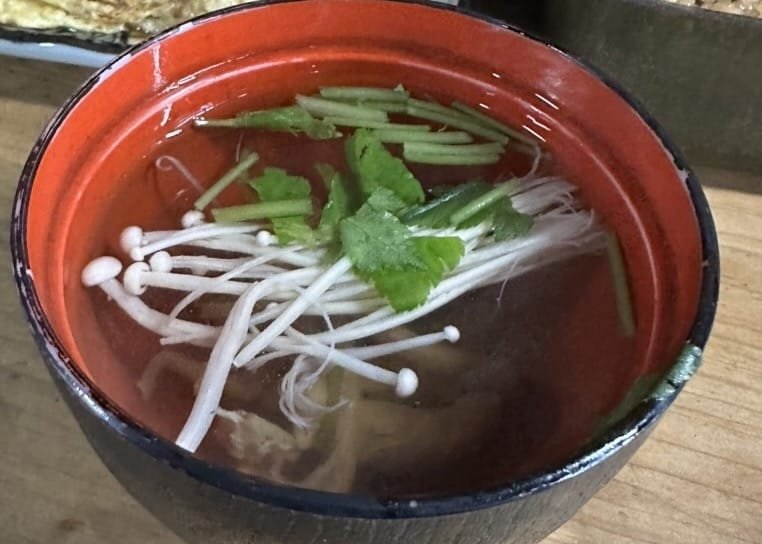

The Sazae-San Connection to Sumiyoshi Ward
I discovered an interesting bit of trivia about Izomiya from a local blogger named Kimuisa who speculates that the shop appeared in the popular manga Saze-san in 1994. Sazae’s husband is a native of Sumiyoshi-ku and in this particular issue they return to his hometown and order unagi mamushi from a famous local restaurant.
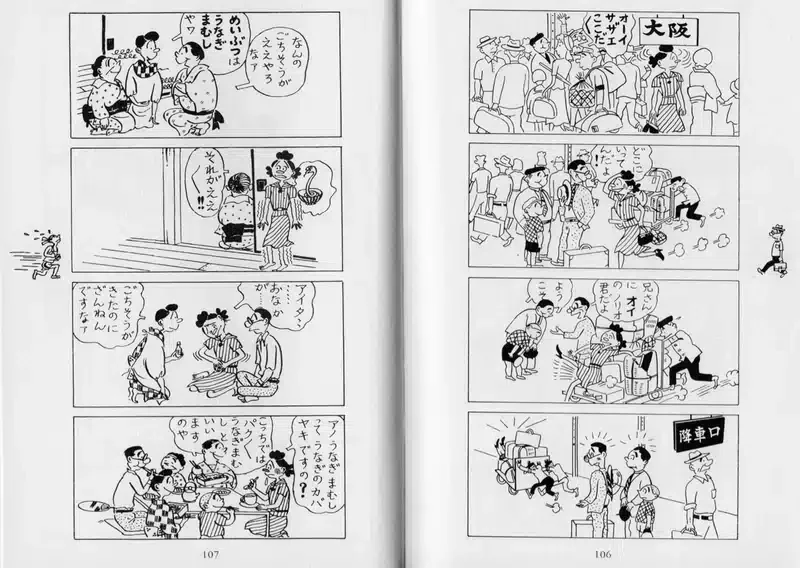
Yaroku Take-Out Stand 洋食やろく お持ち帰り専門店
Address: 3 Chome-31-21 Higashikohama, Sumiyoshi Ward, Osaka, 558-0051. Tel:06-6671-8691. Open: 11:30 AM–2 PM, 4:15–7:30 PM. Closed: Wed.
Around 15 years ago my wife brought back the best korokke I have ever had in Japan. She bought them back from a shop in Sumiyoshi-ku. Unfortunately, as the years went by, my wife completely forgot the name and location of the shop. “How could you forget such an important thing!” “Urusai,” she replied. “If you liked the korokke so much you should have written it down. Not my fault.”
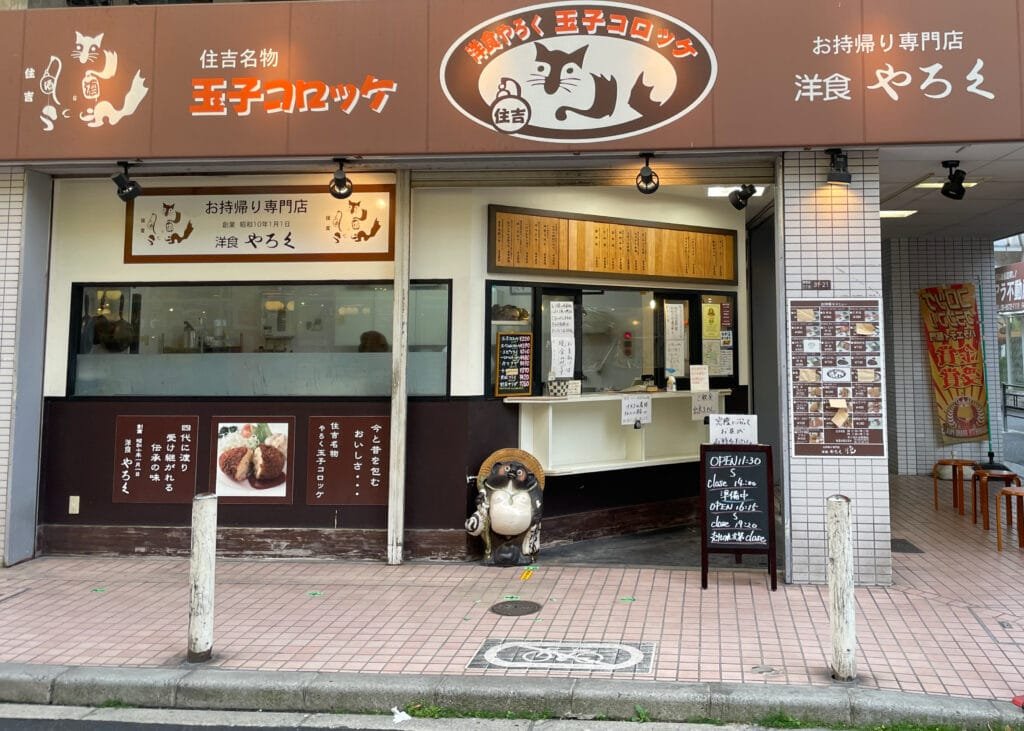
I thought of a nightmare scenario in which I would have to go around to dozens of korokke shops in Sumiyoshi-ku—like the main character in the Korean film Oldboy who tries about 100 plates of gyoza, the meal he was fed every day in order to find the private jail where he was held by nefarious characters for years.
Fortunately, local expert Eiji Harmada told me about a restaurant near Sumiyoshi Taisha called Yoshoku Yaroku that is famous for korokke. Then it all started to come back to me in reverse, like Guy Pearce in Memento. I remembered that my wife picked up the korokke on an excursion to the famous shrine.
A Beloved Restaurant in Sumiyoshi-ku since 1935
I was able to learn a little about the history of Yaroku from reading the menu. The restaurant was started in 1935 and the name was originally written in kanji as 弥六. “The kanji for ‘ya’ (弥) is associated with service and for us, it means providing our customers with delicious food. The kanji for ‘roku’ (六) means six and it was said to be a very auspicious number when the company was founded.”

Yaroku’s korokke are so popular that they opened a take-out stand just a couple of minutes away. The stand keeps it simple by offering only two selections of korokke. The “tamago korokke” or “croquette d’oeuf” in French is made with cubed boiled eggs, shrimp and ham. Surprisingly, the shop does not use potatoes at all. The Special Korokke is a stuffed jumbo shrimp that contains the tamago korokke filing.
I’m 97% sure that these were the delicious korokke that my wife bought 15 years ago…but you never know.
Yoshoku Yaroku Main Branch 洋食やろく本店
Address: 3 Chome-30-16 Higashikohama, Sumiyoshi Ward, Osaka, 558-0051. Tel:06-6671-5080. Open: 11 AM–1:30 PM, 4:30–7:30 PM. Closed: Wed. Website.
I felt a bit guilty enjoying such delicious tamago korokke without my wife, so we decided to back to Sumiyoshi on my birthday. Mind you, I’m not about to welcome another spin around the sun standing outside, so we went to the main branch this time and dined in style. The very first thing that struck me was the impressive array of replica food samples featured in the showcase. The attention to detail is absolutely amazing. Please read Nagisa Kamae’s informative article on replica food samples here.
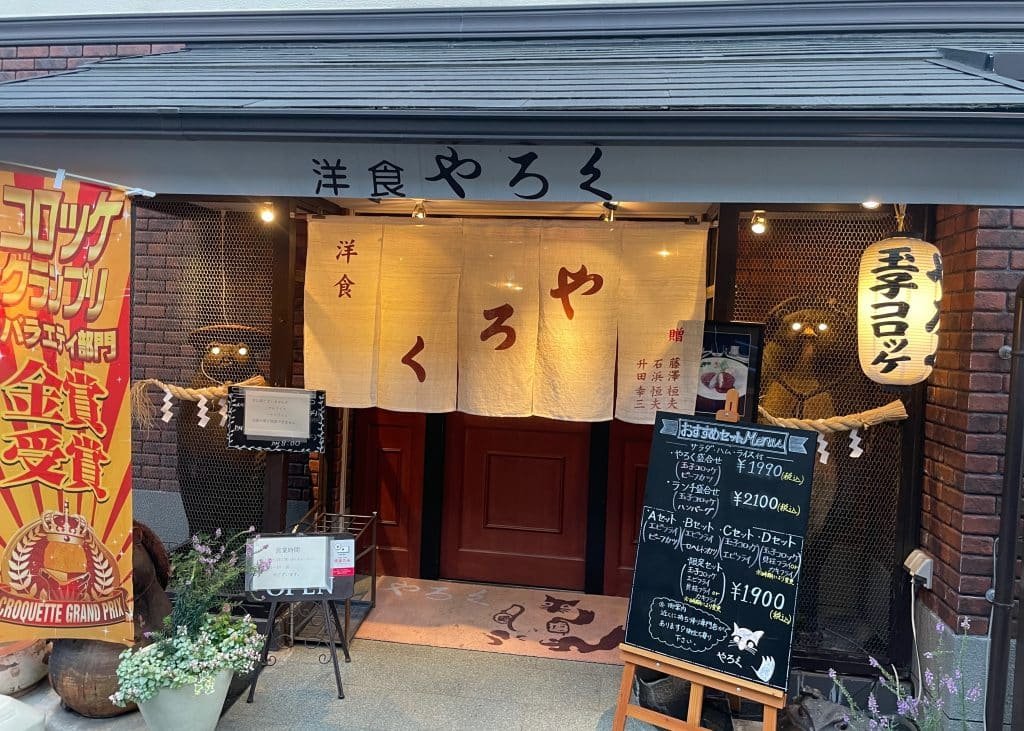

I decided on the Limited Set, which consists of a jumbo sized egg korokke, a large fried shrimp, two scallops salad and rice. My wife chose the hitokuchi he-re tonkatsu, “bite-sized pork cutlet filets.” We planned to share our dishes, but as soon as we ordered we realized that it was a lot of fried food. My wife said that the beef stew would have been a better choice, but we are not the types to flag down the waiter to change an order. Next time.

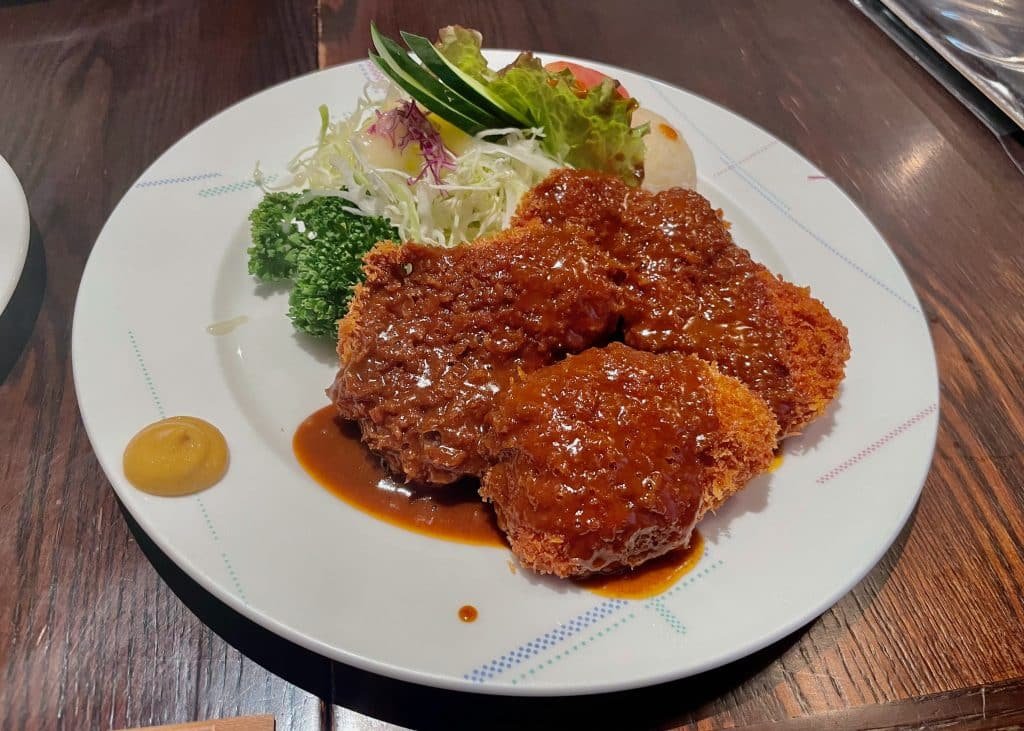
When the food arrived it looked exactly as it did in the display case. This restaurant does not skirt on volume, that’s for sure. The egg korokke was even better the second time. The shrimp was crunchy without being oily and it came with delicious tartar sauce. I’m glad we ordered the tonkatsu pork filet because it was out of this world.
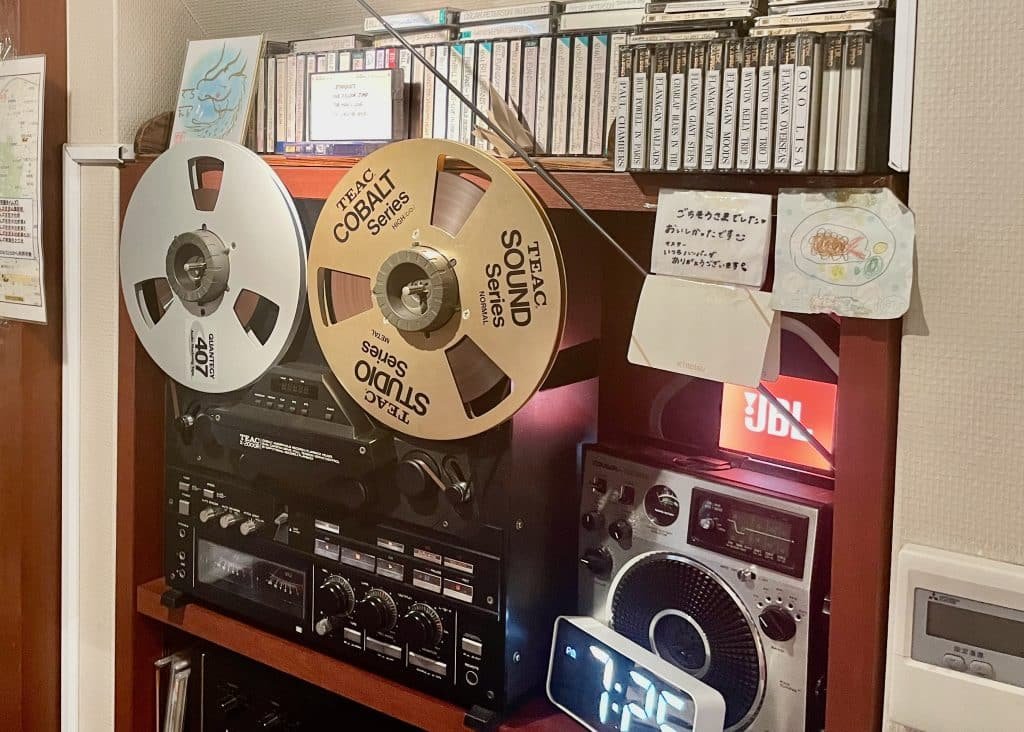
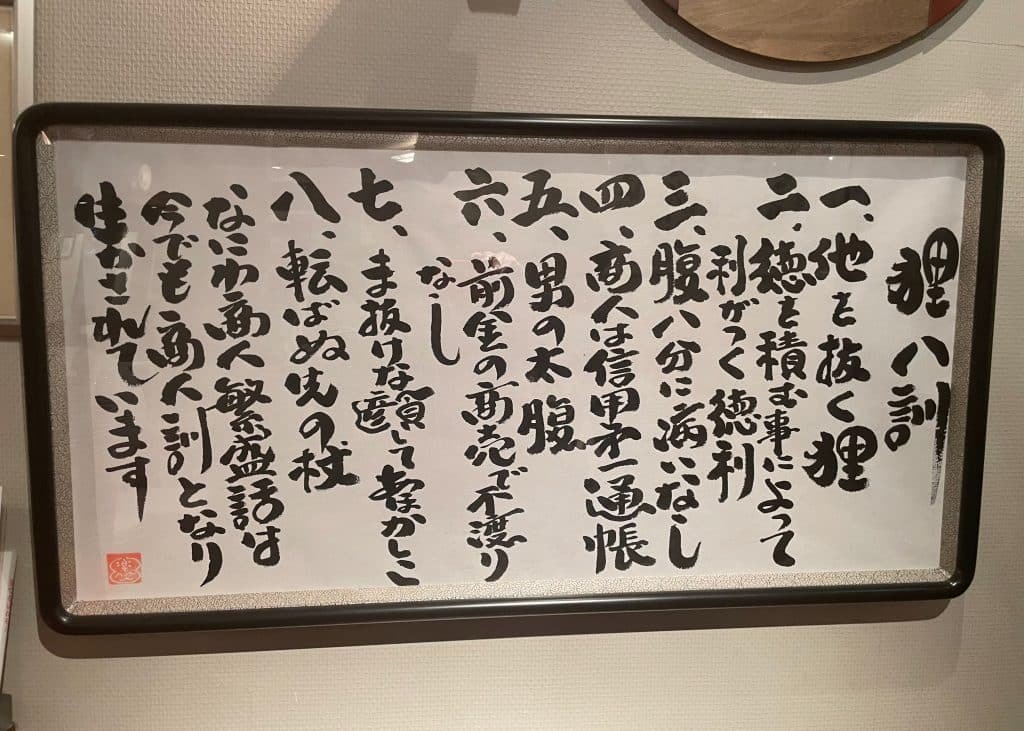
I highly recommend eating at Yoshoku Yaroku after visiting Sumiyoshi Taisha. We went there on a Sunday and it was not crowded at all and very easy to find. As a bonus, the restaurant plays a nice selection of background music on a TEAC reel to reel player. I was impressed by a framed “mission statement” hanging on the wall written in beautiful calligraphy. I didn’t make much of an effort to try and read it and my wife’s earnest explanation about shokunin and tanuki went right over my head because I was so lost in the moment.
Antique and New Toy Dean アンティーク&ニュートイディーン
Address: 〒558-0051 Osaka, Sumiyoshi Ward, Higashikohama, 3 Chome−29−5 Flats Sumiyoshiku 1001. Tel: 06-6654-7887. Open: 12:00-16:00. Closed: Wed. Website. Blog.
After leaving Yaroku, we walked towards the parking lot where my wife parked her car. On the way we walked past a vintage toy shop called Antique and New Toy Dean that had an incredible selection of items displayed in glass cases. I just had to stop in for a few minutes.
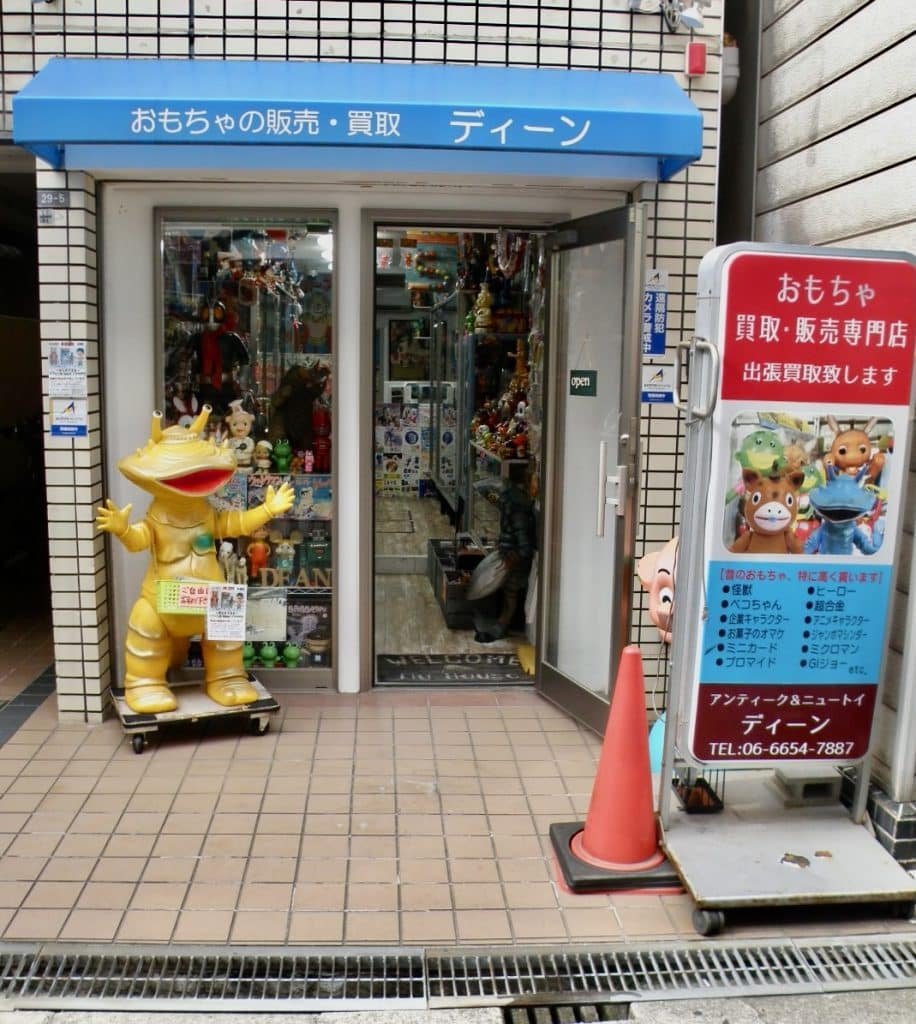
The shop specializes in nostalgic soft vinyl (sofubi) and die-cast metal (Chogokin) toys of monsters and heroes from the 1970s such as Godzilla, Ultraman, Kamen Rider, Grand Mazinger. The owner of the shop really seems to like Booska, a mutated iguana and Kanegon, a Kaiju transformed by Kaneda Kaneo, a boy who is greedy for money, after he was swallowed by a cocoon that makes the sound of money when shaken, both from the Ultraman series. There was also a framed advertisement for the aforementioned Sazae-san manga for some kind of sweet powder you sprinkle on toast.
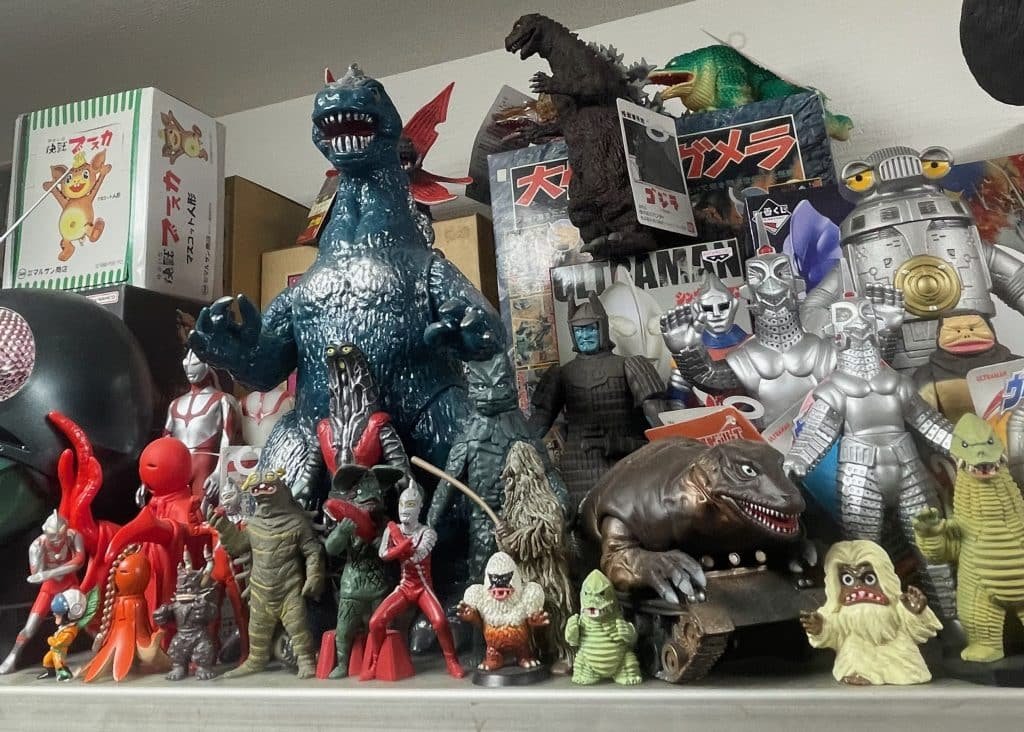
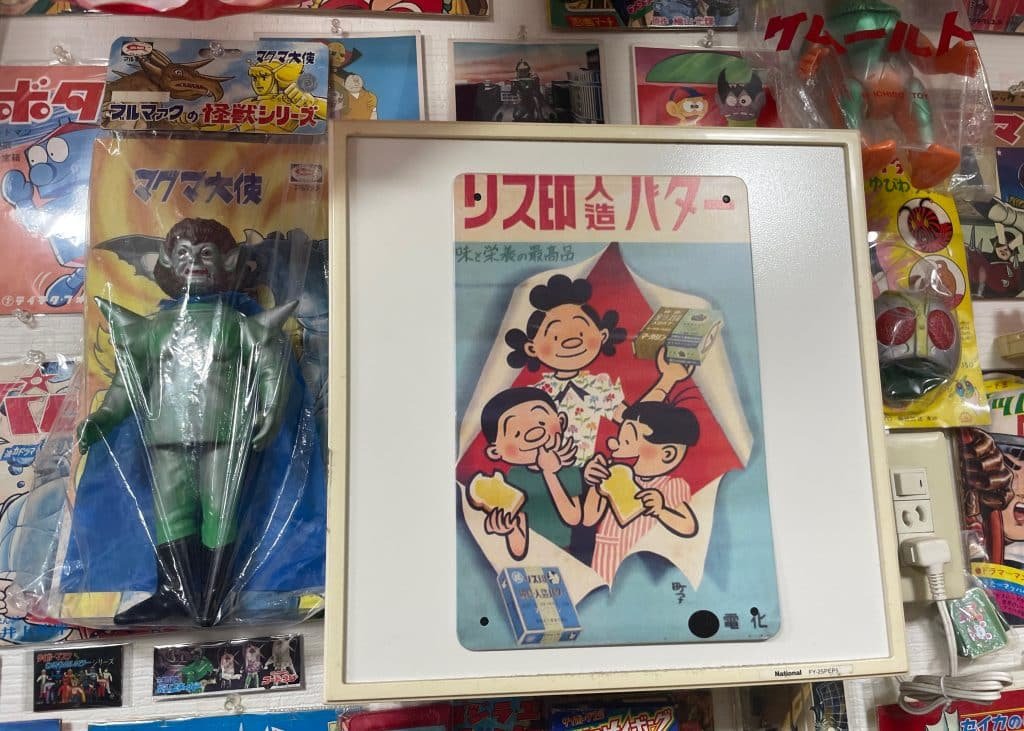
Antique and New Toy Dean first started out in 1999 near Sumiyoshi Taisha. In 2005 the store moved to Abiko, but returned to the original location in 2020. When I complimented the owner on his impressive collection he gently reminded me that all of the items in the store are for sale. He also told me that many foreign tourists visit his shop and I understood the allure. His shop is like being in a museum and Japanese pop culture items have great appeal outside of Japan.


You can see vintage toys like these on display at the Tokyo Toy Museum, but as far as I know there is no such place in Osaka other than shops like this one which are spread out all over the city. Actually, there used to be a vintage toy museum in the Karahori Shopping Arcade that had 30,000 rare items but it moved to Asuka Village in Nara in 2002. I have no idea if they are still open but you can contact then on Twitter. In any case, dropping by Dean after wandering around Sumiyoshi Taisha and having a great meal is the perfect way to end the day.
Bonus: Sumiyoshi Park 住吉公園
Although it is technically in Suminoe Ward, visitors to this part of Sumiyoshi Ward (especially those with children) should not miss a visit to Sumiyoshi Park, the oldest park in Osaka, which is located right behind Sumiyoshi Taisha Station on the Nankai Line.
